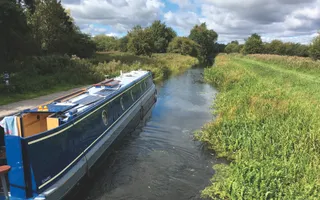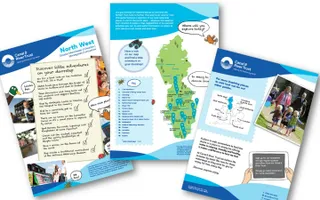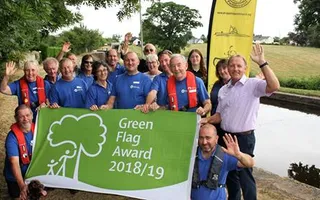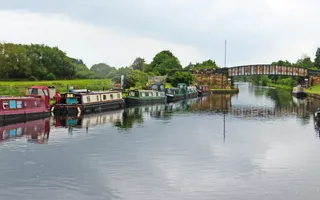An idyllic, rural canal with an abundance of wildlife. Once threatened, the canal was saved by energetic local volunteers and campaigners, and is now home to three Sites of Special Scientific Interest.
The Pocklington Canal runs for 9.5 miles between East Cottingwith and Canal Head at Pocklington. The Pocklington Canal Amenity Society have restored the section from the River Derwent to the Melbourne Arm back to navigation, approximately half the length of the canal. Together with the Amenity Society, we're currently working to extend the navigation to Bielby Arm, which will increase the navigable section by around two miles.
The majority of the canal is designated as SSSI for its wildlife value, with the lower reaches lying within the Lower Derwent Valley National Nature Reserve. The towpath that runs along the canal is a great place for spotting the brilliant blue flash of a kingfisher or dragonflies darting above the reeds.
The canal architecture also adds interest to the scenery, with distinctive swing bridges, classic hump-backed bridges and restored and unrestored locks.
The Pocklington Canal history
The canal was one of the last to be built, and was promoted by prosperous local farmers who sought more effective means of transporting their goods to the fast-growing towns of West Yorkshire. Its Act was passed in 1815, and it opened three years later.
The Pocklington is one of the few canals in Britain that were completed for less than the original estimated cost, costing only £32,695. Coal, lime, fertiliser and industrial goods were carried to Pocklington, and agricultural produce was sent out to the West Riding.
It was taken over by the York & North Midlands Railway in 1848, after just thirty years of operation. During the middle part of the last century the canal fell into disuse and became unnavigable. Despite plans in the 1950s to turn it into a dumping ground for chalk sludge, the canal survived, thanks to an active restoration group.
Heritage Lottery Funding












